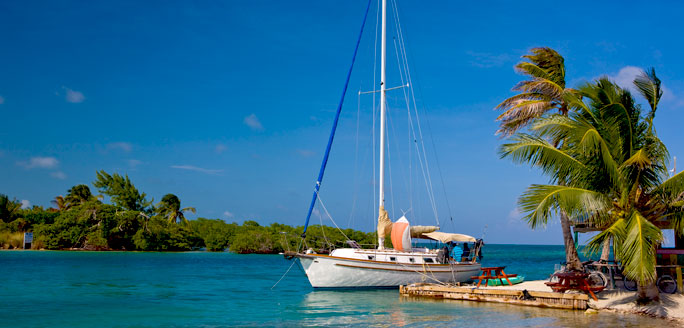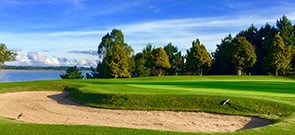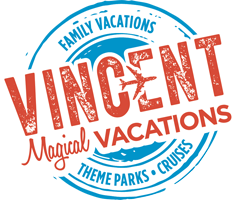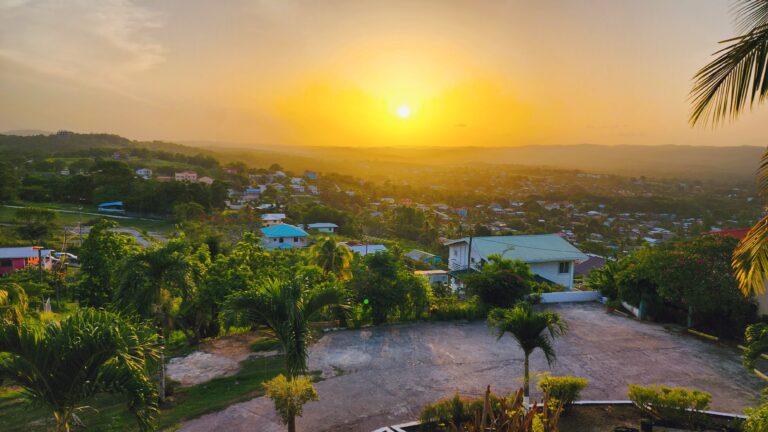We recognize that Disney vacations are not just an investment, but often the highlights of our lives, and we take that responsibility seriously. We want to ensure you have the best vacation experience.
Interested in a job in travel? Click here to learn: How to Become a Disney Travel Agent
Overview
Introduction

Belize is a rising star among those seeking active and educational vacations. Tourists go to see its vast expanses of rain forest, rich collection of birds and animals, a long stretch of coral barrier reef and plentiful Maya ruins. As a result, tourism now surpasses agriculture as the largest industry in Belize, generating more than one-fifth of the country's gross domestic product.
Of course, Belize's growing popularity is making it somewhat less wild than it used to be—especially if you find yourself in a well-appointed jungle lodge or seaside resort. Even the sounds of howler monkeys can seem rather civilized when you're sipping cappuccino on the veranda.
Belize's travel infrastructure is continually improving but remains far from polished: Some areas are difficult and/or expensive to get to, and conventional resort amenities such as golf courses and tennis courts are few and far between. Belize's five "highways" are narrow but in fairly good condition, and traffic is light on them. The rest of the roads are one or two lanes, and typically unpaved, though some are filled in with gravel or sand.
Belize City is Belize's only urban area of any size, though it and its suburbs account for fewer than 80,000 people. It is the country's commercial, cultural and transportation hub, but it is actually Belize's least-appealing visitor destination. Belize City's high violent crime rates keep visitors wary, especially around the downtown area after dark. Many quickly leave the city for safer and more scenic areas on the mainland or to the islands (commonly called cayes in Belize), a short plane flight or boat ride away from Belize City.
Ambergris Caye, Belize's most popular destination, offers a pleasing mix of informal living, watersports and the country's best restaurants and nightlife. Caye Caulker, Hopkins, Placencia and San Ignacio also attract many visitors. Up-and-coming spots such as Punta Gorda, Corozal Town and Sarteneja are inexpensive and almost totally unspoiled by mass tourism.
Geography
Belize shares a small northern border with Mexico. To the west and south, its neighbor is Guatemala. The entire eastern coastline is open to the Caribbean Sea, with a 175-mi-/280-km-long barrier reef running the full length.
Although relatively small, Belize is a country of great geographical diversity. The south and west are hilly, reaching altitudes of 3,700 ft/1,130 m. In the high, hard-to-log areas, virgin forest remains, and the rest of the country has a variety of forests that have regrown after logging. The north and central coastal areas are laced with mangrove swamps, which give way to beaches in the south.
Off the mainland, the water is only about 16 ft/5 m deep all the way to the islands, or cayes (pronounced keys), which are just west of the barrier reef. The islands are, for the most part, flat. Some are surrounded by mangroves, and others are lined with narrow sandy beaches. Farther out are Belize's three atolls—great rings of coral reef surrounding lagoons over submerged ancient islands. (Three of the four atolls in the Western Hemisphere are in Belize; the other is off the east coast of Mexico.)
History
Archaeologists have determined that the Maya settled in Belize as early as 2500 BC. Their civilization reached its height between AD 250 and 900. Descendants of the Maya continue to live in Belize today, particularly the Mopan, Yucatec and Q'eqchi' branches.
The Spanish claimed Central America along with the rest of their New World possessions, but they didn't settle the area that would become Belize. The first sustained European presence came instead from British buccaneers and shipwrecked British sailors, who soon realized that Belize's forests of mahogany were valuable commodities. Slaves were brought in to harvest the timber, and the Baymen—as the British settlers were known—began to extract a tidy profit from the jungle.
Spain continued to claim the area, however, and the decisive battle between the Spanish and British was fought 10 September 1798, off St. George's Caye. The British won and continued to rule the area despite advances by Mexico and Guatemala in the 1820s. The settlement became known as British Honduras, though it wasn't until 1862 that it officially became a British colony. In 1973, the name was changed to Belize, and Belmopan became the new capital city. On 21 September 1981, Belize declared its independence from Britain and became part of the British Commonwealth of Nations.
Today, Belize is a multicultural and multilingual society. Maya, English, African, Creole and Mestizo communities are joined by Mennonites who immigrated to Belize by way of Canada after World War II (and now make up 3% of Belize's population). Spanish-speaking Mestizos from neighboring Central American countries are a large and growing group, making up half of the population. East Indians, Chinese and expatriate Europeans and North Americans are also part of the Belizean melting pot.
Snapshot
The country's main attractions include Maya ruins, scuba diving, a cheerful cultural melting pot, relaxed island life, nature reserves, kayaking, snorkeling, deep-sea and fly fishing, caving and cave tubing, canoeing, beaches and bird-watching. Most travelers divide their time between the coast and the rain forests.
If you are interested in water-related activities, nature and Maya culture, or if you want nothing more than to laze about, you'll enjoy Belize. If you want massive white-sand beaches, extensive nightlife and staged entertainment, look elsewhere.
Potpourri
Belize's deforestation rates are the lowest in Central America.
Approximately 800 documented species of birds live in North and Central America. Belize is home to 540 of them.
A "grand slam" for anglers in Belize is catching tarpon, bonefish and permit (a pompano) on the same trip.
Belize's modern capital city, Belmopan, was built from scratch after Hurricane Hattie devastated Belize City in 1961.
Belize has two Blue Holes—the underwater dive site at Lighthouse Reef and an inland sinkhole with sapphire-colored water just south of Belmopan.
The electric-blue color of the blue morpho butterflies makes them easy to spot in the dark green rain forests of Belize. If you see them nowhere else, look for the blue morpho and other butterflies at one of the country's butterfly farms, such as Green Hills or Tropical Wings.
Actor Leonardo DiCaprio owns an island west of Ambergris Caye, and movie director Francis Ford Coppola has two hotels on the mainland.
You'll find "Cool Spots" all over Belize—Henry's Cool Spot, Juan's Cool Spot and so on. Cool Spot is the local lingo for a bar serving Belikin beer and local rum drinks.
In 1992, Guatemala finally recognized Belize as an independent nation. Guatemala had claimed that Belize was part of its territory on the basis of 500-year-old Spanish decrees. Tensions between the two countries have lessened, but some Guatemalans continue to believe Belize was stolen from them by the British.
Queen Elizabeth II was served gibnut (a rodent that is a national delicacy) on her visit to Belize. Headlines in London the following day read "Queen Served Rat by Wogs"; to this day, the dish is proudly known as "royal rat."
Among the movies filmed in Belize are The Mosquito Coast, adapted from the novel by Paul Theroux, and The Dogs of War, which is set in Africa but features many recognizable places in Belize City. Belize also has been the setting for a number of low-budget schlock movies, including Blood Island, Mega Piranha and 2012: Doomsday.
Baron Bliss, an eccentric English-Portuguese adventurer who became Belize's greatest benefactor, died in 1926 of food poisoning on a yacht anchored off the Belizean coast, without ever having set foot in the country. His generosity is celebrated each year on 9 March, Baron Bliss Day, a national holiday.
Location
Called "Tourism Village," the docking terminal for cruise ships is also a mini-mall with a host of overpriced shops, bars and other amenities. Belize City now gets more than 1 million cruise ship passengers annually.
On some days, three or four large ships may be in port at the same time, stretching Belize's limited tourism infrastructure and overcrowding popular sites such as Shark-Ray Alley near Ambergris Caye and the Altun Ha ruins, just north of Belize City.
Cruise ships drop anchor a few miles outside of Belize City's harbor (it's too shallow for the draft of the cruise ships) and visitors are taken ashore by speedy tenders that are run by the Belize port authority. It takes about 20 minutes to get from the ship to the Tourist Village docks in Belize City. All excursions to the interior and the offshore islands begin at the Tourist Village.
Belize City's central location (near the middle of the country on the Caribbean) has made it a convenient base for day trips into the interior to explore rain forests and Maya ruins, but it does not always make a good impression on cruise ship visitors, and crime is a constant concern.
An additional terminal in Harvest Caye tenders some ships. A 15-minute ferry ride (with tickets sold on-board) takes passengers to Placencia.
Shore Excursions
The most popular excursions are cave tubing at Nohoch Che'en Caves Branch Archaeological Reserve near the capital of Belmopan, visits to the Maya sites of Lamanai or Altun Ha, and snorkel tours at Hol Chan Marine Reserve. Trips are also usually offered to Xunantunich, sometimes with a stop at the Belize Zoo, but this may take two hours driving time each way.
Overview
Introduction

Because of its high crime rate, Belize City is best avoided, or relegated to a guided one-day tour.
Some old frame houses on stilts are being fixed up, and several Victorian mansions have been converted into small inns with restaurants. Even so, Belize's biggest city has a long way to go before it will be considered charming. Still, good restaurants and a vibrant arts community show growth.
Most visitors who spend the night stay in the north side of the city center in Fort George, considered the nicest neighborhood. The area has a small lighthouse and a park with good views of the water.
To reach the heart of the city, you'll cross the Swing Bridge, one of the few manually operated bridges still in use. On the south side of the bridge is the business district, which is the commercial hub of the city and contains St. John's Cathedral, the Bliss Center and the House of Culture, among other attractions.
Must See or Do
Sights—Exploring Maya ruins at Altun Ha.
Museums—Maya jade exhibits at the Museum of Belize; British colonial and history displays at Government House; the colorful history of rum in Belize at Traveller's Rum Museum; Old Belize Museum.
Memorable Meals—Stew chicken served with rice and beans and fried plantains at Nerie's.
Late Night—Dining, gambling, dancing and bowling at the Princess Hotel and Casino.
Especially for Kids—Spotting native animals while strolling through the Belize Zoo.
Potpourri
Although Belize City is low-lying, locals claim it will never sink into the sea because it was built upon a foundation of rum bottles, mahogany chips and ballast bricks.
You can see crocodiles in many areas of Belize. There are even some in the canals around Belize City. Locally, they are called alligators, although true alligators aren't found in Belize.
Location
As the largest port in Belize, Belize City hosts most of the tourist and commercial traffic for the country. Ships anchor in the harbor and Belizean tenders quickly transport passengers to the docks of Tourism Village, a mini-mall complete with a number of restaurants, bars and souvenir shops. Most visitors use the village as a jumping-off point for tours of the city or, the more popular option, the cayes.
Taxis are available at the port and around the city—look for the green license plates of licensed taxis. We do not recommend renting a car, as the road conditions are questionable and traffic accidents are common. Roads become quite congested especially around 5:30 pm, when the Swing Bridge opens and causes traffic to stop for miles/kilometers.







































